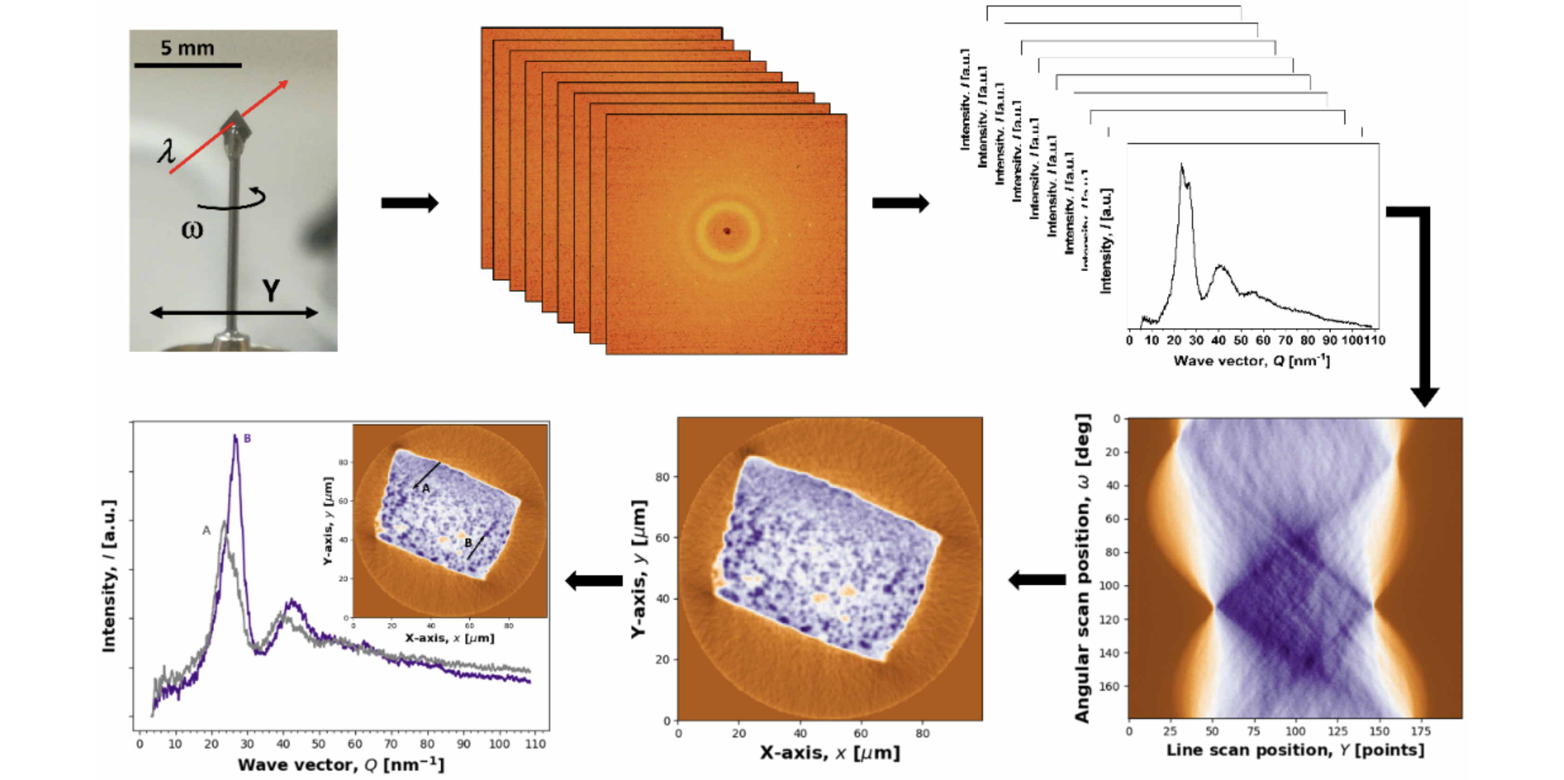In a recent ACS Nano publication, researchers at the Laboratory of Metal Physics and Technology have resolved the structure of a hierarchically phase-separated metallic glass with a small volume fraction of (nano-)crystalline inclusions. Applying X-ray diffraction computed nanotomography (XRD-nCT), they achieved submicron resolution by deploying a 500 nm focused monochromatic beam at the ESRF ID11 beamline.

Using synchrotron radiation it is possible to visualize the internal features of metallic samples without physically destroying them. Methods based on computed tomography have recently been employed to explore local features, but tomographic reconstruction, while relatively uncomplicated for crystalline materials, may generate undesired artefacts when applied to featureless amorphous or nanostructured metallic alloys. Such structures can, however, be revealed by sub-micrometer resolution, and virtual X-ray diffraction in different points of the reconstructed cross-section may provide very localized structural information.
In a recent ACS Nano publication the authors demonstrate the feasibility of using XRD-nCT to investigate the local structure of materials without long-range order. The authors applied a sub-micron focused X-ray beam and a large number of scans (for both the rotational and translational axes) to drastically decrease the voxel size and thus to greatly improve spatial resolution. To avoid an artificial phantom sample, they produced a hierarchically phase-separated Gd27.5Hf27.5Co25Al20 metallic glass ribbon that contains a small volume fraction of (nano)crystals. Separating sharp Bragg reflections (which may generate undesired artefacts during the tomographic reconstruction) from the primary 2D diffraction image, they were able not only to analyze the local structure of the phase-separated metallic glass with submicron resolution, but also to identify the various nanocrystalline phases in the metallic glass matrix. Taking into account the high beam flux of the new Extremely Brilliant Source (EBD) at the European Synchrotron Radiation Facility (ESRF), it is foreseeable that reconstructed XRD data will allow accurate calculation of the pair distribution functions for every submicron-sized voxel in a metallic glass.
- X-Ray Diffraction Computed Nanotomography Applied to Solve the Structure of Hierarchically Phase-Separated Metallic Glass, M. Stoica, B. Sarac, F. Spieckermann, J. Wright, C. Gammer, J. Han, P. F. Gostin, J. Eckert, J. F. Löffler, ACS Nano (2021). DOI:10.1021/acsnano.0c04851
- Laboratory of Metal Physics and Technology, ETH Zurich
- Erich Schmid Institute of Materials Science, Austrian Academy of Sciences (ÖAW)
- Materials Physics, Montanuniversität Leoben, Austria
- European Synchrotron Radiation Facility (ESRF), Grenoble, France
- Korea Institute of Industrial Technology (KITECH), Incheon, South Korea
- School of Metallurgy and Materials, University of Birmingham, UK






